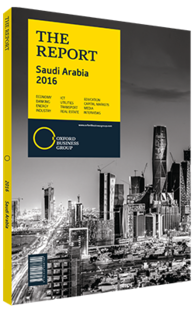Prince Saud bin Khalid Al Faisal Al Saud, Acting Governor, Saudi Arabian General Investment Authority (SAGIA): Interview

Interview: Prince Saud bin Khalid Al Faisal Al Saud
What measures is SAGIA planning to implement to increase foreign direct investment (FDI) inflows?
PRINCE SAUD BIN KHALID AL FAISAL AL SAUD: Increasing FDI inflows is closely linked to ensuring that Saudi Arabia has a business environment that is open, easy to operate in and transparent. Enhancing the country’s competitiveness was identified as a key goal in Vision 2030. We want to rise from our current position of 25th on the World Economic Forum’s Global Competitiveness Index 2015-16 to be one of the top 10 most competitive countries globally.
At the beginning of 2016 SAGIA began the competitiveness acceleration programme, targeting seven priority areas where the Kingdom can rapidly improve the landscape for businesses. These priority areas include: trading across borders, ease of starting a business, access to markets, the labour market, transparency, commercial law and future competitiveness. Across these areas, we are working to complete 113 actions that will make measurable improvements to the investor experience. For example, we have already updated our decades-old company law and created a new insolvency law to provide investors with the legal flexibilities and protections that match today’s business realities. We are also launching a one-stop shop, enabling investors to interact with every ministry relevant to their business under one roof. Lastly, we will soon launch a new investors visa that will markedly improve and speed up the visa process for those seeking to explore investment opportunities.
Which non-oil industries have proved to be best equipped to receive FDI in recent years?
PRINCE SAUD: The industries that we have seen receive the most investment are naturally those with the greatest degree of opportunity. Rapidly rising demand for products and services has made many new sectors and industries potentially lucrative investment prospects. Moreover, Saudi Arabia has a very young population: more than 60% of Saudis are under the age of 35 and the population is growing at a rate of more than 2% per year. This is compared to only 0.2% growth in Europe. Therefore, it is not surprising that sectors like food and drink, health care, transportation, and certain types of manufacturing have seen interest from investors who seek to capture a share of this burgeoning market.
In what sectors can foreign firms play a larger role in developing value-added products and services?
PRINCE SAUD: All sectors present opportunities, especially as government plans to spin off and commercialise services which will enhance private sector growth. Traditionally, investors have focused on the energy and defence sectors, while missing out on the rest. Our challenge is to shift this attention. With that said, our young population presents an excellent opportunity for investors to enter a large and growing market of savvy consumers. With the dual objective of both meeting these demands and encouraging investment into sectors that can provide fulfilling job opportunities to Saudi citizens, SAGIA and other government agencies are collaborating closely to identify and promote investment opportunities in a number of sectors including health care, transportation, technology and renewable energy. Saudi Arabia is seeking to provide holistic packages that combine investment opportunities, market, policy and regulatory reforms, and incentives to encourage and facilitate greater private investment into these key sectors.
Take the renewable energy sector, for instance. The National Transformation Programme has set the goal of increasing annual renewable energy production from less than 100 MW to 3450 MW per year by 2020. Although electricity has traditionally been a utility provided by publicly owned companies, the government is rapidly introducing a number of measures – starting with the break-up of Saudi Electricity Company – to open this new market to private investment.
You have reached the limit of premium articles you can view for free.
Choose from the options below to purchase print or digital editions of our Reports. You can also purchase a website subscription giving you unlimited access to all of our Reports online for 12 months.
If you have already purchased this Report or have a website subscription, please login to continue.

